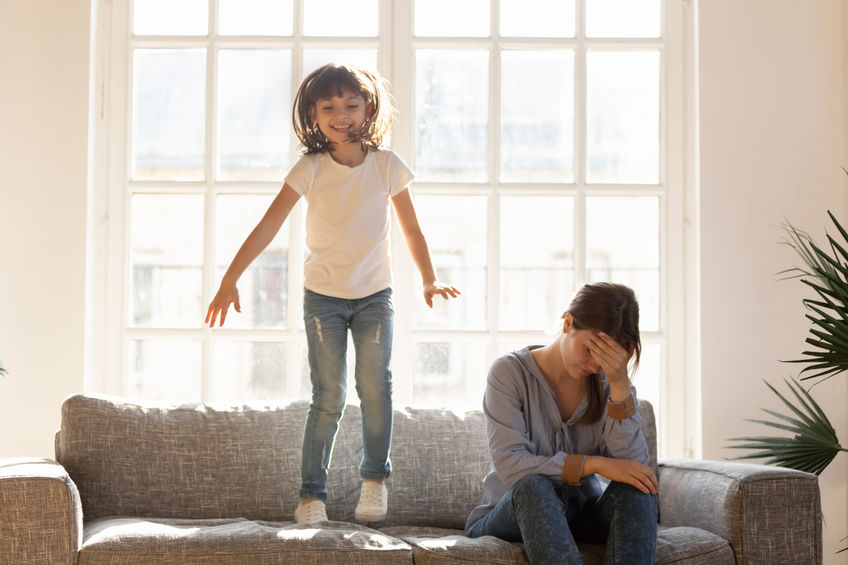Back To Basics: Peace At Home Principles to Reduce Parental Burnout and Family Stress
 May 15, 2023 | Ruth Freeman
May 15, 2023 | Ruth Freeman
Post-pandemic life has left most parents feeling stressed and overwhelmed. You may try to figure out shortcuts that make your life a little easier, or you may feel completely lost on where to begin at all. If you’re feeling like you don’t have the bandwidth to be the parent you want to be, know that you’re not alone.
One recent study reports that 66% of working parents are experiencing “parental burnout” which may include increased anxiety, depression, use of alcohol, increased punitive parenting and even feeling distant from their kids. And the shortcuts that many parents are turning to—sugar, screen time, processed foods, skipping routines—may be making things worse, rather than better. So what can you do instead?
Peace At Home Principles are a great place to start. These are the building blocks of what science tells us helps children thrive and reach their full potential. By keeping these nine principles in mind, you can form more meaningful connections with your children and reduce your own stress in the process. And remember, progress not perfection. Pick one, work on it, and get support.
Peace At Home Principles:
- Be your child’s calm center. When your child is emotionally overwhelmed, your ability to be calm will help guide them back toward a calm state for themselves. Learning how to do this takes practice, but we can help.
- Understand yourself. Take time to understand how your own childhood experiences affect your emotions, thoughts and behaviors today. Without this awareness, you are at much higher risk of passing on adverse childhood experiences to your kids.
- Focus on connection and curiosity. A healthy relationship with your child is based on positive connection, not control. Take time to stay open to your child’s experiences and see them as they really are.
- Teach and model kindness and compassion. Model kindness and compassion for yourself and others. Invite and encourage open discussion about what each of these mean and how you can emulate these values as a family. Modeling is absolutely one of your most powerful teaching tools.
- Create rules, routines, rhythms and rituals with your family. These practices signal safety to the brain and strengthen the important feeling of belonging, both of which protect children’s emotional wellbeing. It helps when you create these approaches together with your family.
- Recognize the power of play and playfulness. Play and playfulness provide powerful signals of safety, calms the brain and open the mind to cooperation and social learning. Play does not require expensive toys or specific tools. Imagination and things found around the house or in nature are often the best ways to foster creativity and joy.
- Strengthen emotional intelligence. Help your child be comfortable with their own emotions as well as those of others. Practice naming emotions and discussing what each one feels like. Use reflective listening to acknowledge your child’s feelings without trying to fix or adjust them. This helps to create empathy and understanding for ourselves and those around us.
- Create problem solvers. Children who are problem solvers embody independent thinking, self-awareness, situational awareness, confidence, and emotional intelligence. Encourage this by allowing them to think through outcomes of age appropriate scenarios on their own, without controlling or guiding solutions. Learn how to coach problem solving skills without giving solutions.
- Signal safety. A child who feels safe in relation to their parents and caregivers will naturally use social-emotional strategies to problem solve. Signaling safety is a powerful way to protect your child’s mental health.
Keep in mind that you don’t have to do everything perfectly to make a difference. By making small changes to daily practices, one step at a time, you can support your own wellbeing as well as your child’s. This will lead to increased happiness and improved connection within your family.
Take one step at a time and get support to battle those post pandemic challenges that are taking a toll on all of us—increased parental stress and child mental health challenges.
For more parenting support, join us for an Upcoming Live Workshop, browse our Libraries of Quick Video Solutions and check out our podcasts and other resources. Questions? Email us at Solutions@Peaceathomeparenting.com or learn more about our Corporate, School and NonProfit programs.
